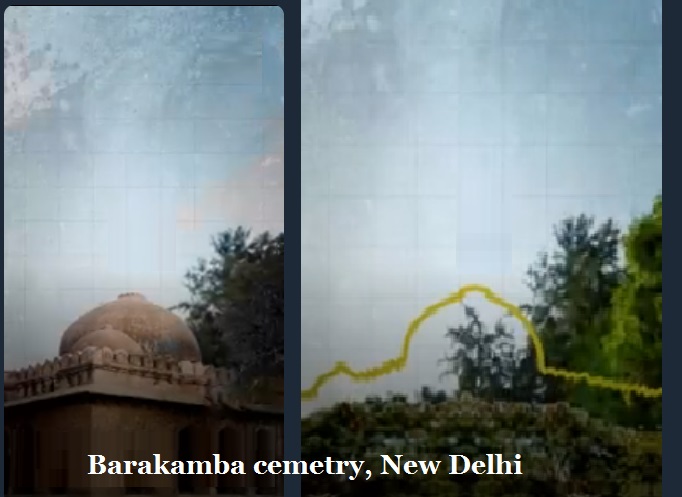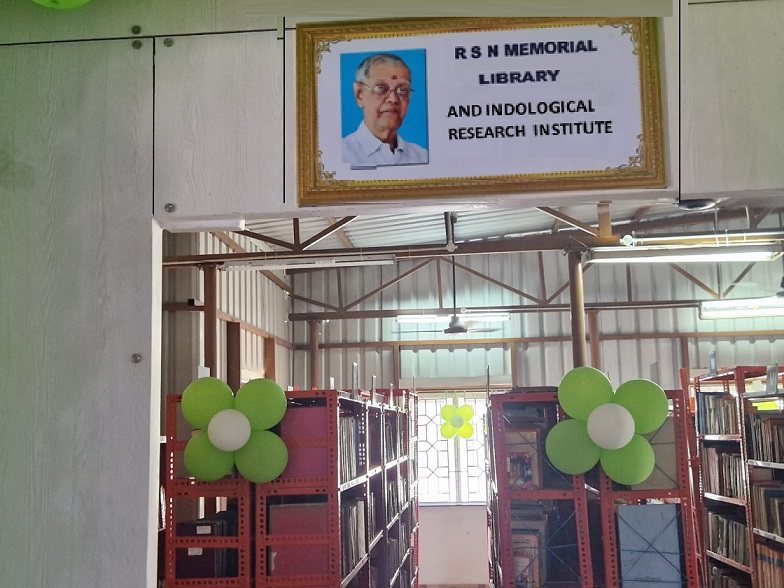Why certain archaeologists should make hue and cry about the findings of skeletons, skulls and bones? (1)

Skeletons, skulls and bones found in India and media reports: Skeletons, skulls and bones discovered, found and recovered during excavations have been common in India. A cursory glance through the media proves that almost every year, many findings are reported from different states of India by the State and Central government archaeological departments and private agencies also. From 3500 BCE to present day, there must have been crores and crores of cremations and burials taken place throughout India, irrespective of the faith and practices followed by the people of India. The population of India had also been rising and falling during these years. Now, India has 140 crores population in 2024. Like Corona of 2020, there had been floods and droughts; deluges and famines; cyclones and tempests; even a tsunami witnessed in 2004, where millions were killed and died leaving dead bodies. Mostly, there were mass burials and cremations taken place to dispose of the bodies. As we have been living, we have been witnesses of all happenings. Therefore, finding of skeletons, skulls and bones here and there had / has been common and not anything unusual. Yet, certain archaeologists nowadays, make a hue and cry, whenever they find any such items. “First time recovered” tag is added invariably with such reports appearing in the media.

April 2024 skeleton found at the excavation site, Gujarat: A human skeleton, degraded and in a flexed posture, found on the slope of a hillock in a Gujarat village could hold the key to a mystery that’s been puzzling a team of archaeologists [1]. The presence of the skeleton, along with pottery artefacts and animal bones, that the team of archaeologists excavated from a hillock, locally called Padta Bet, point to the presence of a 5,200-year-old Harappan settlement that was 1.5 km from the mass burial ground of Juna Khatiya, an Early Harappan necropolis[2].
January 2024 – skeleton found at Vadnagar, Gujarat: The remains of a 2,800-year-old human settlement have been discovered in Gujarat’s Vadnagar, which also happens to be Prime Minister Narendra Modi’s native village. Researchers from IIT Kharagpur, Archaeological Survey of India (ASI), Physical Research Laboratory (PRL), Jawaharlal Nehru University (JNU) and Deccan College have found the evidence[3]. The human settlement that goes back as old as 800 BCE revealed the presence of seven cultural stages, said officials. Excavation in its several deep trenches revealed the presence of seven cultural stages (periods) namely, Mauryan, Indo-Greek, Indo-Scythian or Shaka-Kshatrapas, Hindu-Solankis, Sultanate-Mughal (Islamic) to Gaekwad-British colonial rule and the city is continuing even today. One of the oldest Buddhist monasteries has been discovered during our excavation[4].

May 2022 – 282 skeletons found at the excavation Ajnala, near Amritsar: The skeletons of 282 Indian soldiers who participated in the country’s First War of Independence in 1857 were found during the excavation near Amritsar, said Dr JS Sehrawat, Assistant Professor, Dept Anthropology, Punjab University[5]. The soldiers were said to have revolted against the use of pork and beef-greased cartridges. These were excavated from a well found underneath a religious structure in Ajnala near Amritsar in Punjab[6]. These soldiers were revolting against the use of pork and beef-greased cartridges, a study has suggested. Coins, medals, DNA study, elemental analysis, anthropological, and radio-carbon dating, all point towards the same. However, the claims of the archaeologists have been objected to by others.

Objection of forensic experts in the Anjala excavation: Incidentally, forensic experts – forensic anthropologists – have objected to such report[7], “The role of a physical anthropologist during the excavation of human remains is crucial (Ubelaker 1989, 2009). The excavation team must also comprise historians, archaeologists, anthropologists and at times forensic pathologists in order to obtain an integrated and comprehensive assessment of the remains from a number of different perspectives……Improper excavation techniques or collection procedures made it very difficult, if not impossible, to reconstruct perimortem events. ….” In another paper[8], they also agree that, “Analysis of two independent techniques (genetics and stable isotope) adds significant study novelty. Consequently, stable isotope and mtDNA analyses are consistent with the historical evidence, stating that the 26th Native Bengal Infantry battalion comprised Bengal, Odisha, Bihar, and eastern parts of Uttar Pradesh. Thus, the current research can uncover the hidden aspects of the struggle of the unknown martyrs against the colonial yoke.” That is, whenever skeletal remains were found by archaeologists, they should immediately inform forensic experts to come and participate, so that they could give their first-hand information about them. However, they should also think about the excavations that went on, when their subjects were not at all in the academic curriculum.

July 2021 skeleton found at the Sivagalai site: Archaeologists have discovered a full human skeleton inside an urn which they excavated from the Sivagalai archaeological site in Tamil Nadu’s Thoothukudi district[9]. This is a first at the site where there are remnants of ancient civilization found in a primary burial[10]. They found the skeleton in a lying down position like the head had been positioned to a side and the legs were folded[11]. The skull was severely damaged so we could only collect pieces. Two burial urns were opened on Thursday (02-07-2021) as part of the second phase of excavations which is ongoing at the burial site as well as the habitation site. While one contained the skeleton, the other contained small bones and a red and black bowl. Experts from Madurai Kamaraj University were present when they opened to collect samples for DNA testing, as the state government had signed an MoU with the institution to conduct DNA testing of skeletons found across all excavation sites in Tamil Nadu including in Keeladi[12]. Five more skeletons were found at the excavation site in Keezhadi in Tamil Nadu, where excavation work is being conducted by the Archaeological Survey of India (ASI)[13]. The site, 12 kilometres from Madurai, is in Sivaganga district. More than 10 burial urns were excavated in Konthagai recently in which human skeletal parts were found[14]. The archaeologists at the site said that the skeletons would be studied further to ascertain their age and gender. Then, here also a question arises as to why they have not attended the other excavations or how they are getting such huge data on the skeletal remains, so that they publish papers discussing even DNAs with Dravidian and so on.
August 2020 skeleton found at Konthagai: – For the first time, an adult-sized human skeleton has been unearthed by archaeologists at a trench in Konthagai that comes under the Keezhadi cluster of villages[15]. This is the same site from which five children-sized human skeletons were found earlier[16]

March 2019- 5000 years old Harappan skeleton found: Archaeologists have found a massive burial site dating back to the Harappan civilization, around 360km from Dholavira in Gujarat’s Kutch district[17]. They said this site is 300 m x 300 m big with more than 250 graves out of which 26 have been excavated. They found one full human skeleton that is around six feet in length, estimated to be around 5,000 years old[18].

May 2018 skeleton found in the Juna Khera Rajasthan site: More than three human skeletons, without any ornaments or antiquarian remains, were found recently in the ongoing excavation site of Juna Khera at Nadol in Rajasthan[19]. The site is expected to reveal details of life in the area in 10th -12th century[20].
© K. V. Ramakrishna Rao
09-04-2024
[1] Indian Express, Near Kutch Harappan graveyard, remains of a skeleton and the key to a puzzle, Written by Sohini Ghosh , Gopal B Kateshiya, Ahmedabad, Rajkot | Updated: April 5, 2024 06:18 IST.
[2] https://indianexpress.com/article/long-reads/kutch-harappan-graveyard-findings-9250132/
[3] India Today, Remains of 2,800-year-old settlement found in PM Modi’s village in Gujarat, News Desk New Delhi, Edited and Published By: chingkheinganbi mayengbam, Published On: Jan 17, 2024; UPDATED: Jan 17, 2024 01:51 IST.
[4] https://www.indiatoday.in/india/story/remains-of-2800-years-old-human-settlement-800-bc-found-vadnagar-pm-modi-native-village-gujarat-2489637-2024-01-17
[5] NDTV, Skeletons Of 282 Indian Soldiers Killed In 1857 Revolt Found In Punjab, India NewsAsian News InternationalUpdated: May 11, 2022 3:42 pm IST.
[6] https://www.ndtv.com/india-news/skeletons-of-282-indian-soldiers-who-revolted-in-1857-found-during-excavation-in-amritsar-2965740
[7] Sehrawat, J. S., and R. K. Pathak. “Non-scientific archaeological recovery of the human remains from an ancient well in India: challenges in their identification.” Archaeol. Environ. Forensic Sci 1.1 (2017): 79-92.
[8] Sehrawat, J. S., Agrawal, S., Sankhyan, D., Singh, M., Kumar, S., Prakash, S., … & Rai, N. (2022). Pinpointing the geographic origin of 165-year-old human skeletal remains found in Punjab, India: evidence from mitochondrial DNA and stable isotope analysis. Frontiers in Genetics, 13, 813934.
[9] Hindustan Times, Human skeleton found inside burial urn in TN excavation site, By Divya Chandrababu, Hindustan Times, Chennai, Jul 03, 2021 11:40 AM IST
[10] https://www.hindustantimes.com/india-news/human-skeleton-found-inside-burial-urn-in-tn-excavation-site-101625256411822.html
[11] Times of India, Sivagalai excavations: Full human skeleton found in burial urn, Padmini Sivarajah / TNN / Updated: Jul 1, 2021, 20:17 IST
[12] https://timesofindia.indiatimes.com/city/chennai/sivagalai-excavations-full-human-skeleton-found-in-burial-urn/articleshow/84038506.cms
[13] Hindustan Times, 5 more human skeletons found at the archaeological site near Madurai, Byhindustantimes.com, Chennai, Jul 04, 2021 01:45 PM IST.
[14] https://www.hindustantimes.com/cities/others/5-more-human-skeletons-found-at-the-archaeological-site-near-madurai-101625386283109.html
[15] The News Minute, Adult human skeleton unearthed at Keezhadi excavation site, Written by:TNM Staff, Published on: 14 Aug 2020, 10:24 am
[16] https://www.thenewsminute.com/tamil-nadu/archaeologists-unearth-adult-sized-human-skeleton-keezhadi-130716
[17] Times of India, 5,000-year-old human skeleton found in Kutch, Nimesh Khakhariya / TNN / Updated: Mar 12, 2019, 14:35 IST.
[18] https://timesofindia.indiatimes.com/city/rajkot/5000-year-old-human-skeletons-found-in-kutch/articleshow/68367314.cms
[19] Economics Times, Skeletons found at 10th century Rajasthan excavation site sent for dating, Last Updated: May 15, 2018, 11:47:00 AM IST.
[20]https://economictimes.indiatimes.com/news/science/skeletons-found-at-10th-century-rajasthan-excavation-site-sent-for-dating/articleshow/64171202.cms?from=mdr
Filed under: 12000 years of Indian culture, academicia, anthropology, archaeological sites, archaeological survey of India, archaeology, bias, bone export, budikanama, carbon, civilization, collection, colonial, Colonialist discourse, discrimination, DNA, dolavira, Dravida, Dravidian, forensic, forensic anthropologist, forensic expert, historicity, historiography, historiosophy, history, history curriculum, ideological, ideology, megalith, megalithic, mesolithic, methodology, miscegenation, neolithic, neolithic cattle keepers, neolithic cattle raiders, New Chronology, skeletal remain, skeletal remains, skeleton, skeleton export, skull export | Tagged: archaeology, artifacts, bone, bone collection, bone export, chalcolithic, forensic, forensic anthropologist, forensic expert, forensic science, history, lithic, megalithic, mesolithic, museums, neaolithic, neolithic, neolithic period, skeletal remain, skeletal remains, skull, skull export, travel | Leave a comment »








































































